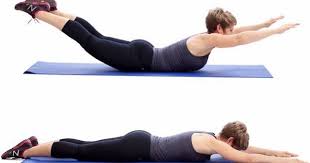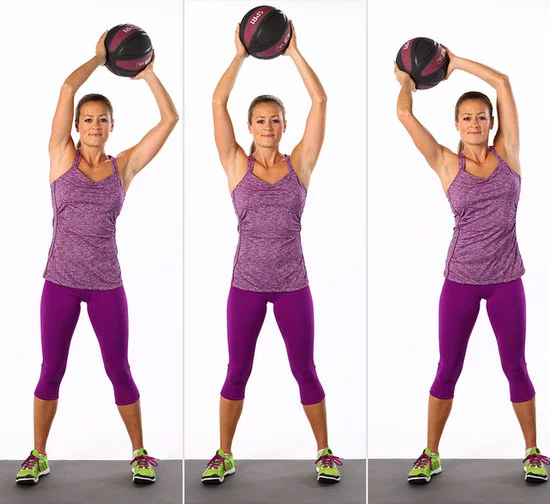
This article is the second in the series Core Strength@Range. It will cover more advanced core@range exercises (intermediate to advanced) as well as spend some time covering the addition of speed to the movement (which ultimately is what the core needs to be very good at combating – a load that happens quickly and having your core able to counter this load at velocity in protecting the spine).
As outlined in the my first Core-Strength@Range article, our traditional core training routines continue to place us at risk in that:
1. Most clients don’t train their core appropriately to develop the core strength coordination required to support the lumber spine during more advanced movements, and
2. Many exercises are too advanced resulting in excessive hip flexion activation and subsequent excessive lumbar spine loading during these exercises (eg Incline situps, Ab roller, Double Leg lowers, etc).
3. Rarely do I see clients training the core in excessive range (starting in a torso extended position – with or without a rotation). This is problematic in that when we do place our torso in that position (which can happen during every day activities), our core musculature doesn’t know how to protect the spine in this range resulting in damage/injury to the lower back.
This article expands on my previous article with further advice as to how you can train your core in an extended range (safely) moving beyond the introductory Swiss ball crunch variations previously outlined.
In a gym setting, it is often seen as a no-no to do any exercises where there is excessive lumbar extension. Like all exercises, if your have the conditioning to do these exercises correctly with the right supporting musculature switching on, these exercises are great to develop the functional strength that we need.
Unfortunately, most gym goers I see performing any form of lumbar extension movement are typically doing them with poor core strength/coordination and/or with excessive speed (which exacerbates the stress on the lumbar spine).
The number 1 lumber extension exercise I see that is done without adequate control is the Kettlebell swing.

Unfortunately, there is the belief that the harder you squeeze your bum at the top of the movement and drive your hips forward that the better the exercise is for you – THIS IS WRONG!!
Without adequate core control, all you are doing here is jamming up your lower back with a dynamic hip extension movement without adequate core control. Added to this that the first phase of the KB swing is typically done poorly (resulting in the lower back being forced into a flexion position under load) making this exercise quite dangerous for the less well conditioned trainer.
There are several more controlled & excellent torso extension exercises that can be done safely and with speed control to ensure that they are being done correctly giving the torso musculature the time needed to develop the strength and coordination needed to safely protect the lower back during this type of movement.
SUPERPERSONS:

This is an excellent exercise to begin training your torso in an extended range.
This exercise can be completed with a very slow contraction (lifting arms, legs off the ground), you can control how far you raise your limbs, you can do one limb at a time (arm, alternate leg), you can easily add weight to either legs or arms and you can speed up the movement as your torso becomes conditioned to the exercise.

DYNAMIC MEDICINE BALL LIFTS/SWINGS:
My favourite piece of gym equipment is the medicine ball (MB). It is great for so many reasons, you can lift it, swing it, throw it, do exercises on it and if you get the rubberised versions you can do a whole variety of other conditioning exercises that I will expand upon in a future training article.
If we focus on the use of the MB for core extension strength, the following exercises are very useful:

MB Swings and rotations
Regarding the image on the right, what I particularly like about this exercise is that you are targeting the two main torso weakness ranges of motion:
1. bending over with a weight, and
2. Extending AND rotating under speed/load.
These exercises can again be done slow and controlled to begin with (no weight at all to start).
A further error I see with the use of medicine balls is that gyms continue to buy MB’s that weigh 10kg+. The whole idea of the MB is to keep it light, easy to hang onto and able to perform dynamic activities with the ball without the risk of swinging iron around in a gym setting.
I have never needed to use a ball greater than 4-5kg. In fact most of my conditioning routines use 2-3kg balls.
Using a MB in the above scenario, you can move/swing the ball in any/every plane with a controlled finish.
As I mentioned in my last article, a key role of the core is to protect the lumbar spine from damage when there is an unexpected rapid rotation, flexion or extension.

The use of MB’s can be excellent in training this control by swinging MB’s into these extended ranges.
MB around the world (see image at the right) is an excellent way of training the core provide dynamically control of the torso. As you become more conditioning through the core, you can increase the range of motion (larger circle) and even speed up the movement (advanced).
With a focus on speed of movement, I like clients to work through two types of dynamic MB work:
1. Begin with throwing activities that require the core to engage dynamically throughout the full movement.

You are requiring the torso to be strong, coordinated and powerful during these movements. A great start to developing the ideal functional torso strength you should aspire to.
These movements de-emphasise the breaking phase of the movement – Deceleration is the next phase of the exercise routine.
2. These exercises should be done only after you have developed a good core strength base.

Rapid acceleration/deceleration MB swings
The emphasis is on initiating the movement with your core and then breaking rapidly (stop the MB as quickly as you can) using your core to stop – not your arms, etc.

Partner MB throws/catches
There are unlimited variations to these exercises. These can be done in a way that really challenges the client. If you are the thrower, you can speed up the rate of throws, make the throws faster, harder and increase the range that the client has to reach to catch and then re-throw back to you.
This will be the focus of a future article.
SUMMARY:
- Training the core in the gym using traditional exercises is only the first step you should take to maximise functional torso fitness.
- Training your core in extended torso positions improves the functionality for everyday movements.
- Using a training device like a medicine ball increases the variety of exercises you can undertake in developing a dynamic functional core.


